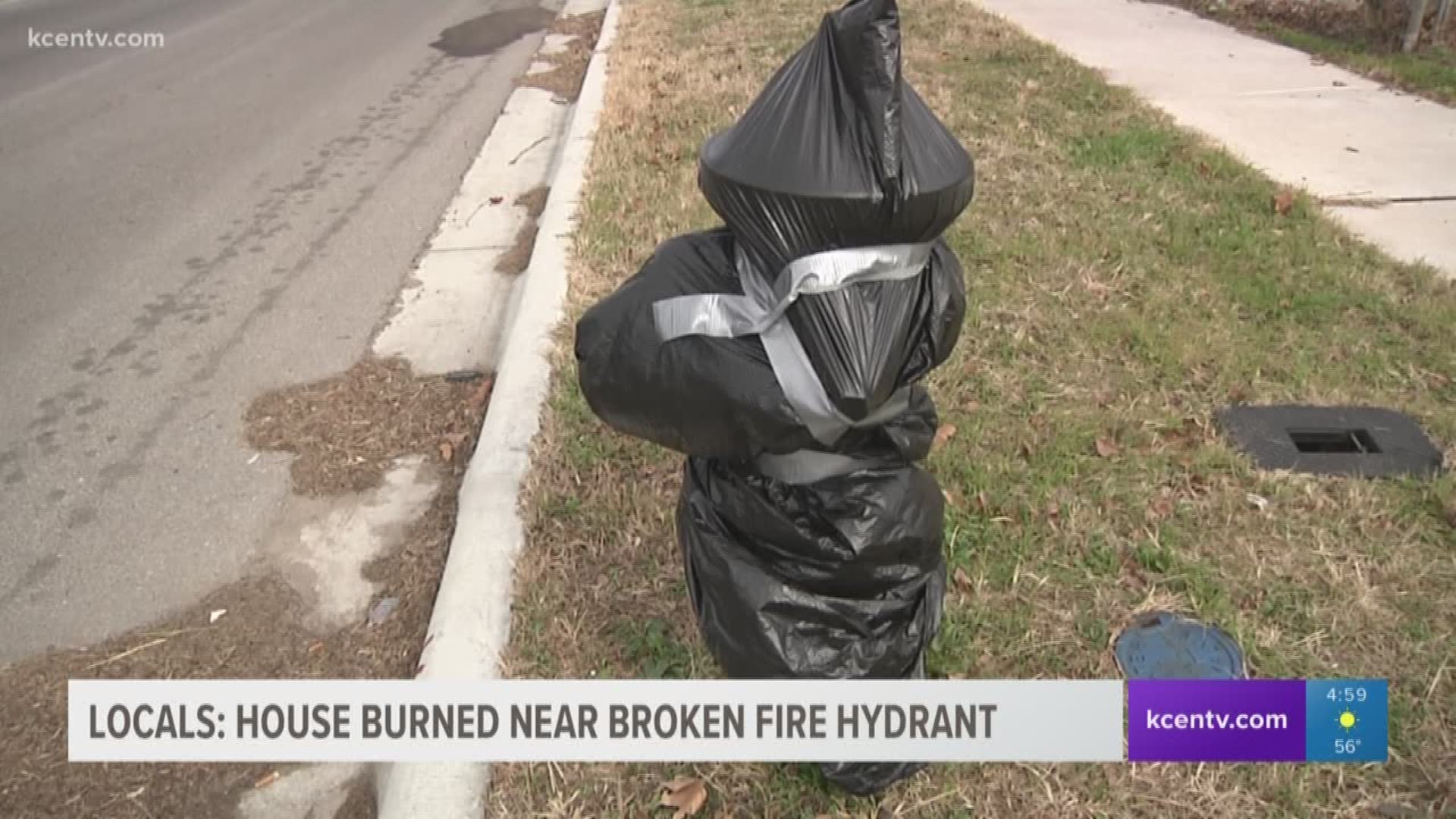CENTRAL TEXAS — After firefighters were forced to use a hydrant about a block away from where a fire tore through the home of a single mother and her daughter, leaving them with nothing but their family pet and the clothes on their backs, KCEN Channel 6 thought it was time to investigate.
On Dec. 2. a fire destroyed Tanisha Hill's home on Gray Drive in Killeen. Hill said the two closest fire hydrants to her home were out of service and firefighters had to tap a third hydrant that was nearly a block away.
More than two weeks later, at least one of those fire hydrants is still out of order and wrapped with plastic and tape.
How long have the hydrants been out of order? Are there more that need repair? How do the non-working hydrants affect firefighters responding to calls in the area? Investigative reporter Andrew Moore contacted the city of Killeen multiple times Monday. Channel 6 is still waiting a response as of Tuesday morning.
KCEN Channel 6 investigated the conditions and inspection frequency of fire hydrants in cities throughout Central Texas. Our investigative team submitted requests in Waco, Temple, Killeen, Harker Heights, Belton and Gatesville.
The request asked each municipality for a list of fire hydrants throughout the cities, their last inspection dates and whether or not they were working. The requests did not ask for specific identifying information like exact locations, which are protected under the Texas Homeland Security Act. Instead, the requests sought data on the functionality of the hydrants to try to determine whether or not they worked.
Gatesville responded immediately, admitting many hydrants have less than optimal flow, while still promising the city had the capability to suppress a fire. According to raw data provided by the city, Gatesville has 231 fire hydrants. Of those, 14 do not work. Nearly 40 percent, or 86 hydrants, needed attention in 2016.
City Manager Bill Parry explained then that the hydrants that needed attention were due to poor water flow – an issue that has more to do with the city’s aging water lines than with the hydrants.
The city developed backup plans, including operating two 8,500 gallon water tenders and a pumper truck – in addition to carrying 1,200-foot fire hoses.
Belton and Killeen had more hydrants in 2016 with fewer problems.
The raw data for Harker Heights suggested nearly 40 percent of hydrants had not been flow tested in two years, even though they are supposed to be tested and inspected annually. Fire officials who sat down with KCEN Channel 6 in 2016 explained the inspections happened regularly and all the hydrants were working. They said at the time that firefighters used pen and paper to document hydrant conditions and much of the data had not been input into a database – causing initial confusion.
In Temple, rapid population growth meant much of the data requested also only existed on paper. The fire department demonstrated another computer system that helps firefighters find hydrants when they need them.
Christian took KCEN through the process for flow testing hydrants in 2016 and explained how color-coding was used to help firefighters identify the best hydrant in a given neighborhood.
The result of the 2016 investigation showed that Temple, Killeen, Belton and Harker Heights were regularly maintaining hydrants, based on KCEN’s data analysis and interviews with fire professionals. Gatesville, which was transparent about its issues, appeared fully equipped to handle emergency situations through a web of contingency plans, as it continued to work to improve its aging infrastructure.
KCEN sent the same request to the city of Waco in 2016. Then, the city refused to release data on whether hydrants were working, citing terrorism concerns in a letter to the attorney general. In a ruling letter that arrived in July 2016, the attorney general agreed with Waco’s attorneys and argued that hydrants are critical infrastructure and therefore not protected by the Freedom of Information Act.
Waco City Spokesman Larry Holze said in 2016 that Waco had nearly 5,500 hydrants; and, while he would not supply the raw data, he said most were working.
📱Make it easy to keep up-to-date with more stories like this. Download the KCENTV app now!
Have a news tip? Email news@kcentv.com, or visit our Facebook or Twitter pages.

